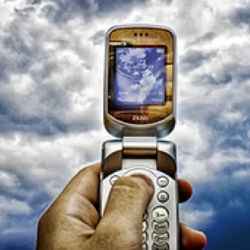 The topic of mobile computing in the cloud seems to occupy every tech blogger’s mind on the planet. The idea of storing all your data on the cloud (in the clouds?) is so fascinating that anyone who dares to say otherwise is considered almost a Luddite. Well, let me play a little bit of devil’s advocate here.
The topic of mobile computing in the cloud seems to occupy every tech blogger’s mind on the planet. The idea of storing all your data on the cloud (in the clouds?) is so fascinating that anyone who dares to say otherwise is considered almost a Luddite. Well, let me play a little bit of devil’s advocate here.
When we are talking about mobile in the cloud we essentially talking about two different things. One – being on the go and storing your data on some network storage so that such data is accessible from any computer. As long as you are able to log in to that storage – you’re good to go.
Second thing – is having all of the above at our fingertips on our smartphone or mobile internet device (iPhone, iTouch and so on). For some reason, still mostly invisible to me, most tech bloggers have decided that by the end of 2010 it will be hot to have all your data in the cloud and accessible from your smart phone.
I did a little experiment recently. I purchased plenty of space on Google’s Picasa and uploaded every single photo I have since I bought my first digital camera. That includes raw images and edited images, so there was approximately 30% overhead. Still, the overall volume hit 110 Gigabyte. Nothing much in terms of current disk space. It took me a week to realize that I don’t want to wait any longer for all these pictures to be uploaded, so I canceled the process. Of course, if I had a dedicated channel it would not have taken so long, but I don’t. My nightly backups have to run. I have work to do. VPN connections eat up a lot as well. So my personal photo collection failed to upload completely.
What about small business use? Will small business owner upload all his documents, data (whatever that may be) or images if it will take away his time? I don’t think so. A few Word documents are fine, but once you start talking hundreds of megabytes, anywhere outside of the corporate networks that might be a problem. Just recently as we have finalized one of the projects, we needed to upload about 100 Megs of files – already compressed – to the client’s representative. It took other party in South Carolina full 15 minutes from receiving a download link to getting a complete download. Sure, storing on the cloud sounds like fun, but until whatever you have stored is half an hour away from you – it’s not a working solution, it’s a storage room out of town.
Next stop – mobile phone use. I know people who live and breath their Blackberry, but I also know people who don’t. And I know more people who don’t want to exhaust their eyes reading things on Blackberry screen than those that would. iPhone is a great entertainment device, but I can’t – for the life of me – type anything long there. Same is with BlackJack, Tilt or Droid. I just don’t see a particular reason to do it, if I can always get back to my X61s which at least has a decent size keyboard. Another issue with doing some kinds of work on a smart phone is the limited screen real estate. I am yet to see one client who can grasp an idea of a regular web site mock up, a desktop software GUI draft or even an income statement from the cell phone screen. Of course, a CPA with 20 years of experience under his belt might pull this off with income statement, but not a regular small business owner.
Overall, having your data available both on the cloud and off is a great idea. However, until we will be able to use a real high-speed connection to that data, nothing major is going to happen. Storage rooms are a great business, but having storage room doesn’t mean your car gets to move faster.
 Latest news on
Latest news on